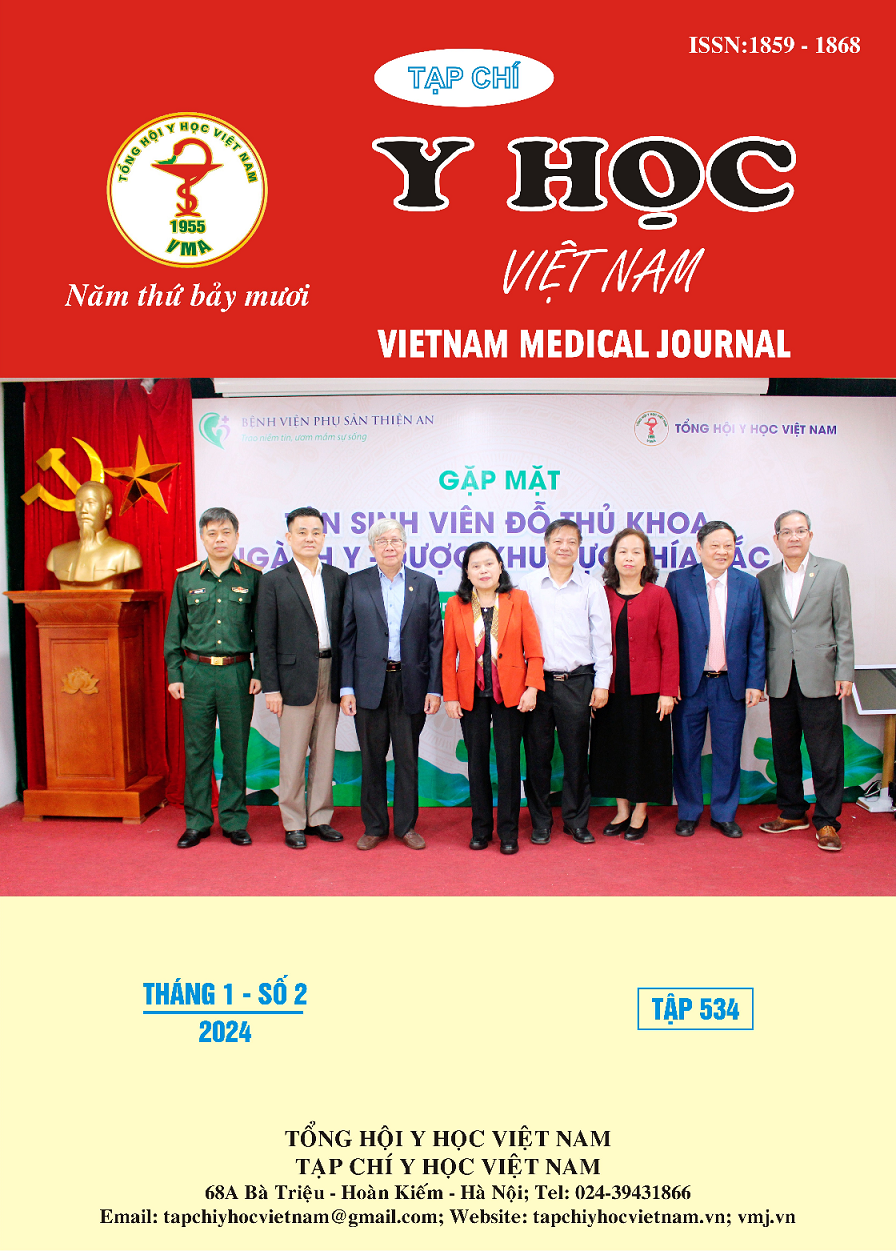ROLE OF THE HILAR SPLENIC LYMPHADENECTOMY IN TREATMENT OF GASTRIC CANCER
Main Article Content
Abstract
Background Splenic hilar lymphadenectomy has been traditionally included as part of D2 lymph node dissection following total gastrectomy for gastric cancer. However, recent studies suggested that station 10 lymph node (No.10 LN) dissection with or without splenectomy should be preserved for several situations. This study was conducted to determine the risk factors for No.10 LN metastasis and assessed the value of No.10 LN dissection by calculating the therapeutic index (TI). Method A retrospective study on 92 patients who underwent radical total gastrectomy with D2 lymphadenectomy plus No.10 LN dissection for gastric adenocarcinoma in the University Medical Center at Ho Chi Minh City from Mars 2018 to December 2022. Clinicopathology features included tumor size, tumor location (longitudinal, crossectional), tumor staging (depth of invasion, pN status), Borrmann type, differentiation, lymphatic invasive status, and perineural invasive status. Primary outcomes were the incidence of No. 10 LN metastasís and 5-year survival. Result The mean number of harvested lymph nodes at station 10 was 2.5 ± 1.4. The incidence of No.10 LN metastasis was 22.8%. Univariate analysis demonstrated that factors associated with No.10 LN included tumor size, T4a staging, N3a/N3b staging, poor differentiation, Borrmann type 4, lymphatic invasion, greater curvature or posterior wall invasion, and positive No. 4sb/4d LN. The multivariate analysis showed that T4a staging, pN3 staging, greater curvature or posterior wall invasion, and Borrmann type 4 were independent risk factors for No.10 LN metastasis. The TI was also higher than 5 for cases with No. 4sa/4sb LN metastasis. Conclusion No.10 LN metastasis was associated with T4a staging, cN3 staging, greater curvature or posterior wall invasion, or Borrmann type 4 gastric adenocarcinoma. Besides, cases with macroscopic suspicious or intraoperative detected metastatic No. 4sa or 4sb LN should also be taken into account for No.10 LN dissection due to the high therapeutic index.
Article Details
References
2. Kano, Y., Ohashi, M., Ida, S., Kumagai, K., và cộng sự (2020). Therapeutic value of splenectomy to dissect splenic hilar lymph nodes for type 4 gastric cancer involving the greater curvature, compared with other types. Gastric Cancer, 23(5), 927-936.
3. Oh Jeong và cộng sự (2019), "Clinicopathological features and prognostic impact of splenic hilar lymph node metastasis in proximal gastric carcinoma", European Journal of Surgical Oncology. 45 (3), pp. 432-438.
4. Quadri HS, Smaglo BG, Morales SJ, Phillips AC, Martin AD, Chalhoub WM, et al. (2017) Gastric Adenocarcinoma: A Multimodal Approach. Frontiers in surgery.4:42-59.
5. Sasako, M., McCulloch, P., Kinoshita, T., & Maruyama, K. (1995). New method to evaluate the therapeutic value of lymph node dissection for gastric cancer. British Journal of surgery, 82(3), 346-351.
6. Shibo Bian và cộng sự (2016), "The role of no. 10 lymphadenectomy for advanced proximal gastric Cancer patients without metastasis to no. 4sa and no. 4sb lymph nodes", Journal of Gastrointestinal Surgery. 20 (7), pp. 1295-1304.
7. Yura, M., Yoshikawa, T., Otsuki, S., và cộng sự (2019). The therapeutic survival benefit of splenic hilar nodal dissection for advanced proximal gastric cancer invading the greater curvature. Annals of Surgical Oncology, 26(3), 829-835.
8. Zhi-Liang Hong và cộng sự (2017), "A preoperative scoring system to predict the risk of No. 10 lymph node metastasis for advanced upper gastric cancer: a large case report based on a single-center study", Oncotarget. 8 (45), pp. 80050.


